|
Administrator
Join Date: 5 Jul 2012
Userid: 1
Posts: 5,047
Likes: 1,731
Liked 190 Times in 113 Posts
|
 Re: Perkembangan Militer Regional ASEAN
Re: Perkembangan Militer Regional ASEAN
Tambahan dari artikel yang sama  ^
Quote:
Indonesia
It should be noted that not all corvettes have surface-to-surface missiles, and Indonesia’s former East German ‘Parchim Is’, or ‘Kapitan Pattimura’ class, are unusual in being dedicated ASW platforms with hull-mounted sonar, augmented in some ships by variable depth sensors, armed with both anti-submarine torpedoes and mortars. Indonesia augments these 16 ships with seven Dutch-built vessels; three 30-year-old ‘Fatahillahs’, which also feature a strong ASW suite, and the most modern Damen Schelde Naval Shipbuilding (DSNS) ‘Diponegoro’ class which are one of Damen’s Sigma family (Sigma 9113), with their shaped hulls to reduce the radar cross section.
The Sigmas form the keel of a new family of corvettes (also designated ‘light frigates’) to meet the Guided Missile Escort (Perusak Kawal Rudal) 105 requirement which are being designed by DSNS and the domestic yard PT PAL under an August 2010 agreement. Based upon the Sigma 10514, these 2,400-tonne vessels will be optimised for ASW with the first of two scheduled to be laid down this year and to enter service in 2016 but it is unclear how many are required. Priority may have been given to a requirement for three submarines with work starting next year.
Malaysia
Neighbouring Malaysia’s requirements have been mentioned earlier and it should be noted that the Royal Malaysian Navy also operates six corvettes; four former Iraqi ‘Assads’ (as the ‘Laksamana’ class) and two German-built ‘Kasturis’, while Singapore has six ‘Victory’ class ships based upon the Lürssen MGB 62 design but with an exceptionally high mast for its search radar. Nearby Thailand operates seven corvettes of which the five ‘Khamronsin’ and ‘Tapi’ class are ASW vessels. There is no requirement for new vessels with Bangkok more interested in acquiring frigates and upgrading its vessels.
Vietnam
By contrast Vietnam is expanding its corvette fleet steadily from the original four ‘Tarantul’ (‘Project 1241E’) class, with an ASW capability, and two domestically-built ‘Improved Pauks’ (‘Project 12418’) and is acquiring up to ten ‘Improved Tarantuls’ (‘Project 1241.8’) all of which are pure ASuW vessels. In 2011 DSNS revealed they were discussing the sale of four ‘Sigma 10514s’ to Vietnam, of which two would be built domestically Vietnam is also acquiring Russian-built frigates, two of which have been delivered, reflecting the preference of some Asian navies for larger, multi-role platforms capable of projecting power in ‘blue water’ environments. South Korea, for example, which operates 23 ‘Po Hang’ class ASuW/ASW corvettes will replace them with the ‘FF-X’ frigates and the ‘Gumdoksuri’ class fast attack craft for coastal operations in offshore islands, with the first FF-X ship having been delivered in 2012. By contrast Japan has never been interested in corvettes.
Taiwan
However, both China and Taiwan want large surface combatants and corvettes. Last year China’s first two ‘Jiangdao’ (‘Type 056’) class corvettes were launched and will join the fleet this year. They were revealed to be modern vessels similar to the ‘Diponegoro’ class with shaped hulls, but at 1,440-tonnes (compared with 1,692 tonnes) they are slightly smaller. They are reportedly to replace the 40-year-old ‘Jianghu I/I’ (‘Type 053H/H1’) class frigates and the ‘Houxin/Houjian’ (‘Type 037 1G/2’) fast attack craft/patrol craft. These ships are being built by the Hudong-Zhonghua and Huangpu yards, who also built the ‘Jianghus’ and it is reported that ten are at various stages of construction with at least two more on order.
Taiwan, which has previously relied upon a combination of major surface combatants and fast attack craft, has its own corvette programme as ‘Hsun Hai’ (‘Swift Sea’). Revealed in April 2012 the programme envisages ‘stealthy’ corvettes of 900-1,000 tonnes with supersonic surface-to-surface missiles which are reportedly to be introduced to combat the China’s new aircraft carrier, the Liaoning. It will be a domestically-designed and produced vessel with some ASW capability, possibly incorporating weapon and sensor systems from the Taiwanese Navy’s decommissioned ‘Gearing’ class destroyers, its current ‘Knox’ class frigates and ‘Jin Chiang’ class fast attack craft. The requirement is for a dozen vessels with deliveries beginning next year. It is expected that they will be constructed by Lung The Shipbuilding.
India
There is interest in corvettes around the Indian Ocean. The Indian Navy itself has operated corvettes since the 1960s and originally relied upon Russian designs currently using four ‘Abhay’ (‘Modified Pauk II’) ASW ships, which may be re-engined, and twelve ‘Tarantul I’ or ‘Veer’ class ASuW ships. The first indigenous ships were the ‘Khukris’ (‘Project 25’) which were planned as ASW vessels but were built as ASuW platforms, their only ASW capability being in the helicopter for which there is a deck, and the same applies to the improved versions of the ‘Kora’ (‘Project 25A’) class, the most significant difference being the replacement of first generation SS-N-2 ‘Styx’ surface-to-surface missiles with SS-N-25 ‘Switchblade’.
The latest Indian corvettes are the ‘Project 28’ ships of the ‘Kamorta’ class. Like all Indian corvettes they are intended for deployment in offshore waters but these are multi-role vessels which incorporate ‘stealth’ technology. They also possess a considerable ASW capability with hull-mounted and towed array sonars, helicopter torpedo-launchers and mortars as well as a useful Anti-Air Warfare (AAW) capability through their local-area defence Barak 8 surface-to-air missiles. However, construction of these ships has been unusually protracted with the first-of-class laid down in 2006 but not scheduled for commissioning until the third quarter of 2013. Four ships are currently on order, with the last to be delivered in 2016, and the difficulties and delays encountered in producing this class must put at risk New Delhi’s plans for twelve ships but these may be overtaken by plans for ‘Project 28A’ class ships which might involve a trimaran hull.
Pakistan
Neighbouring Pakistan prefers its surface fleet to consist of a mixture of frigates and fast attack craft while Sri Lanka focuses upon OPVs. However, Bangladesh has incorporated requirements for corvettes in the ambitious defence procurement plan it published in February 2009. Two small, 600 tonne, corvettes or patrol craft are in the plan but China’s separate tender for two corvettes has been accepted and Dhaka is considering a long term plan to order four more corvettes from Turkey.
The choice of corvettes and/or OPVs by Asian navies will clearly be shaped by a raft of factors including cost, theatre of operations and the need to have dedicated craft for the small surface combatant role. It is clear, however, that these vessels will continue to be found in Asian naval inventories well into the decade.
|
 ^
Malaysia
 Kedah class NGPV (photo : Militaryphotos)
Kedah class NGPV (photo : Militaryphotos) |






 ^
^ ^
^

 ^
^
 ^
^
 ^
^
 ^
^
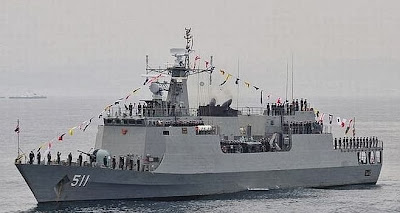
 ^
^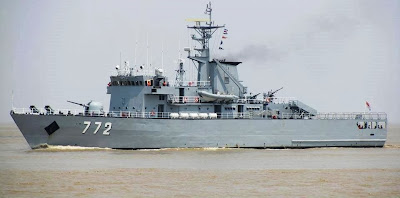
 ^
^
 ^
^

 ^
^

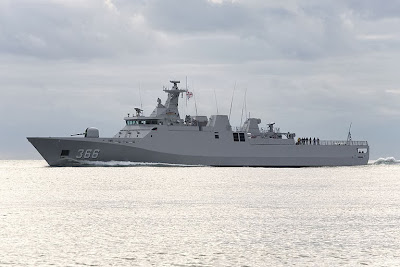
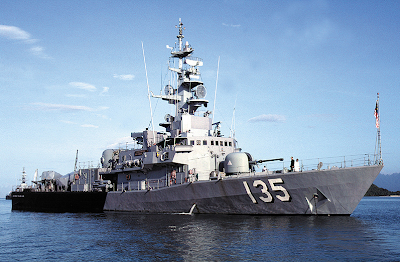
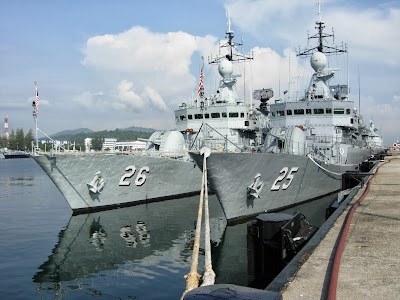



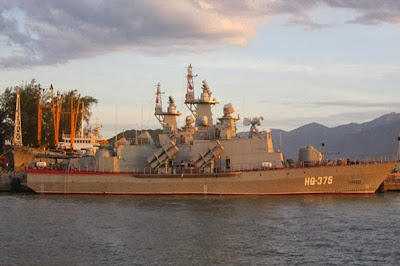



 Similar Threads
Similar Threads